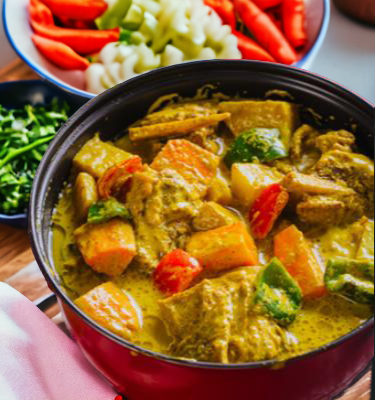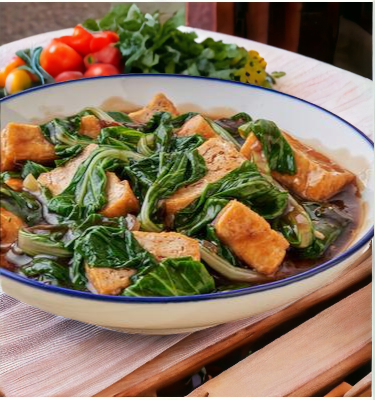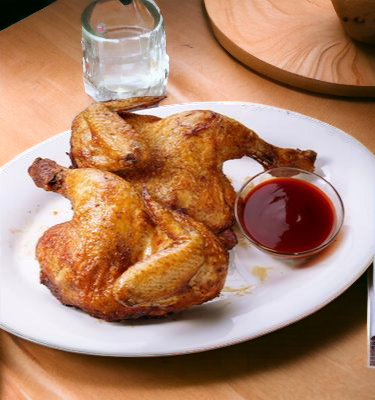Bagnet, the Ilocano pride, is more than just a dish; it is a testament to the rich culinary tradition of the Philippines. Marrying the simplicity of ingredients with the complexity of flavors, we shall embark on a delightful journey of tender textures and crunchy finishes.
1: Introduction to the Irresistible Bagnet
The conundrum of cooking bagnet lies not in the ingredients but in the technique. With the right guidance, turning 1 kg of pork shank into a delectable treat becomes an attainable culinary feat. The seduction starts with the aroma and concludes with a crunch that echoes through the soul of every food lover.
2: The Ingredients Symphony
To commence, let's unveil the ensemble: 1 kg of princely pork shank is the protagonist, with 4 cups of vegetable oil for the deep-frying ballet. A dressing of 0.5 cup vinegar, 4 cloves of garlic, and 4 pcs shallots accompany, while the zing of 2 pcs red chili adds spice to the plot. Complement this with 2 tbsp of bagoong isda (fermented fish paste), and 4 pcs of luscious tomatoes packed in juice, no salt added.
3: The Preliminary Rituals
Before we proceed, a thorough preparation is vital. Begin by cleaning the pork shank, ensuring the removal of hairs and impurities. Massage the meat with affection, using a mixture of garlic and shallots, crushed and minced to release their flavorful oils. This process will not only tenderize the pork but also infuse it with a robust character.
4: The Marinating Dance
Marination is not a step to bypass. It is, instead, an overnight waltz in the refrigerator where the pork commingles with vinegar, seasoning it with personality and tang. As the hours pass, the vinegar works its magic, tenderizing the shank and meshing the flavors deeply.
5: The Initial Sizzle
Upon completion of the marination, we introduce the pork to a calming boil, transforming it from raw to cooked with finesse. Once the meat is soft to the touch yet still resilient, we acknowledge the readiness for the next step.
6: A Respite
Patience is paramount. The cooked pork must rest, be cooled, and allowed to dry. Air becomes an ally here, wicking away moisture from the surface to set the stage for a flawless fry.
7: A Date with Destiny—The Frying
In a vessel, 4 cups of vegetable oil await. When the oil quivers with heat, the pork is gently placed in. Discipline dictates the temperature must be maintained. The shank bathes, evenly browning to a regal hue. This is not haste; this is artistry.
8: The Captivating Crunch
What marks the true bagnet is the venerable ‘crisp’. Each bite must sing a crackling opera. Achieving this is the climax of the journey — the pork withdraws from the oil bath, rests, and then re-enters for a final, defining crisping.
9: The Ensemble of Flavors
As the bagnet cools, we turn to the supporting cast. The raw sharpness of sliced shallots, the fieriness of red chili, and the tang of tomatoes create a sauce of 2 tbsp bagoong isda. This concoction is the harmony that bridges our bagnet to perfection.
10: The Grand Assembly
Finally, the dish comes together — the pork is carved with precision, laid out with intent, and the condiment stands by, ready to enhance. Eating bagnet is a ritual; it is the silent nod to the tradition, the respect to the ingredients, and the unabashed indulgence in richness.
The Crispy Crusade Culminates
In cooking bagnet, one does not simply follow a recipe; one embarks on a voyage. Through marinating, boiling, resting, and double-frying, we turn humble pork shanks into crisp, succulent bagnet. It is more than food; it is a cultural icon, a festival on a plate, and a tribute to patience and precision.
Discover the secrets to cooking the ultimate Filipino Bagnet. Follow our detailed guide to transform 1 kg of pork shank into a crispy, succulent delight. Experience the perfect blend of vinegar, garlic, shallots, and spices for a truly authentic feast. Join us on this crisp-filled culinary journey.














